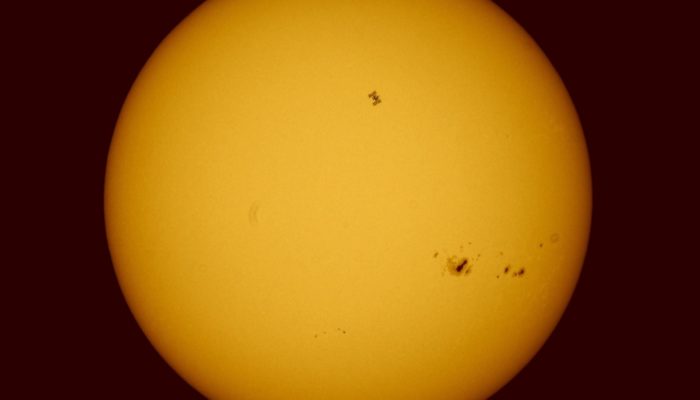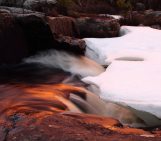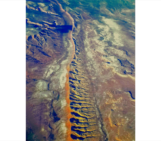
The International Space Station, a human-made, life-supporting habitat, and a most complex and unique scientific laboratory, orbits the Earth in only 90 minutes – that is 16 times a day! Even so, only occasionally, we earthlings have the privilege of seeing it’s dark outline against the much brighter surfaces of the Sun or Moon.
Timing is of crucial importance if you want to see this, as such an event lasts for the briefest of moments, more or less than one second. Blink and it’s gone! In this frame, the ISS transits the Sun. The spectacle is enhanced by the large group of sunspots and some active regions which appear as bright veins on the surface of the Sun. What I find endearing is that the two objects, one so close and one so far, are both equally unreachable.
The image is a single shot at 1/4000s exposure time, ISO 100 taken on July 14th, 2012 near Lehliu Gara, Romania. Equipment: Canon EOS 1000D, Skywatcher 90 mm F/12 Maksutov telescope mounted on an equatorial mount.
Description by Eliza Teodorescu, after the description on imaggeo.egu.eu.
Imaggeo is the EGU’s online open access geosciences image repository. All geoscientists (and others) can submit their photographs and videos to this repository and, since it is open access, these images can be used for free by scientists for their presentations or publications, by educators and the general public, and some images can even be used freely for commercial purposes. Photographers also retain full rights of use, as Imaggeo images are licensed and distributed by the EGU under a Creative Commons licence. Submit your photos at http://imaggeo.egu.eu/upload/.




